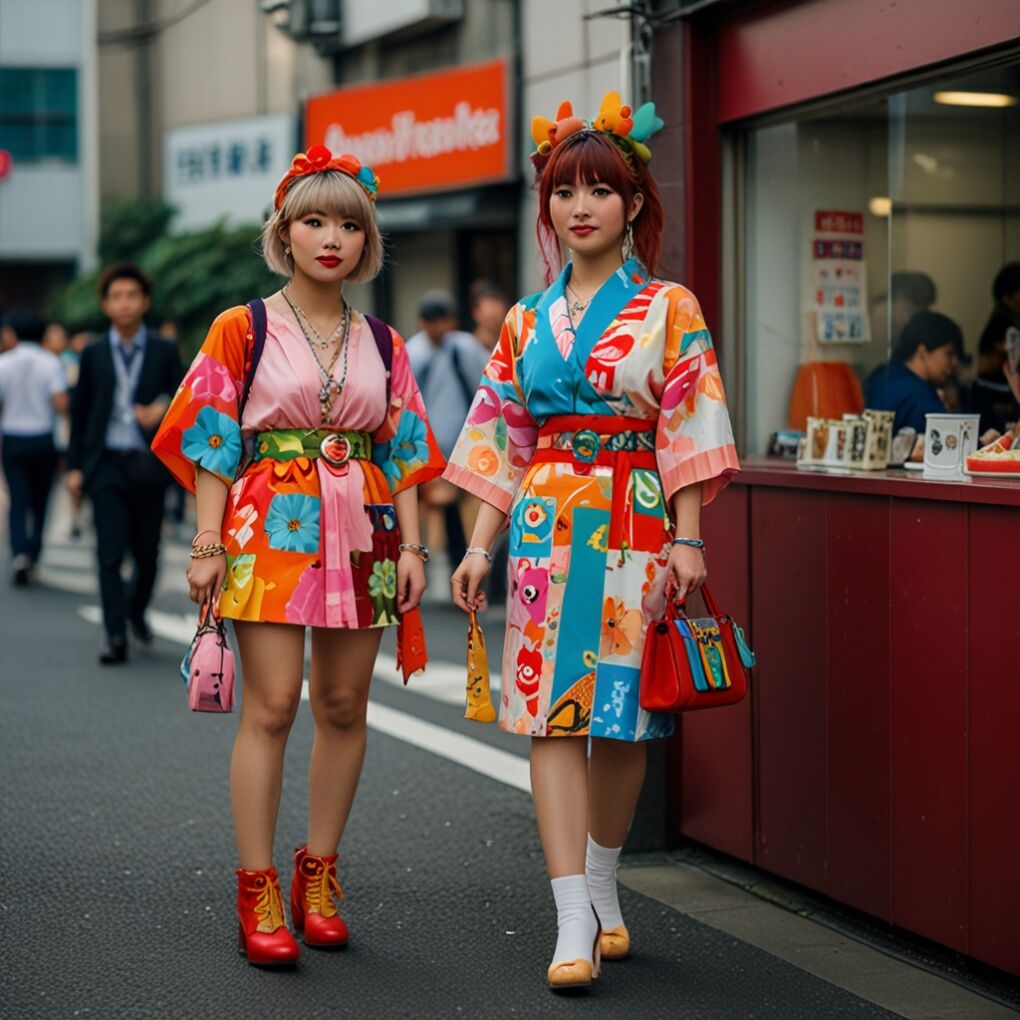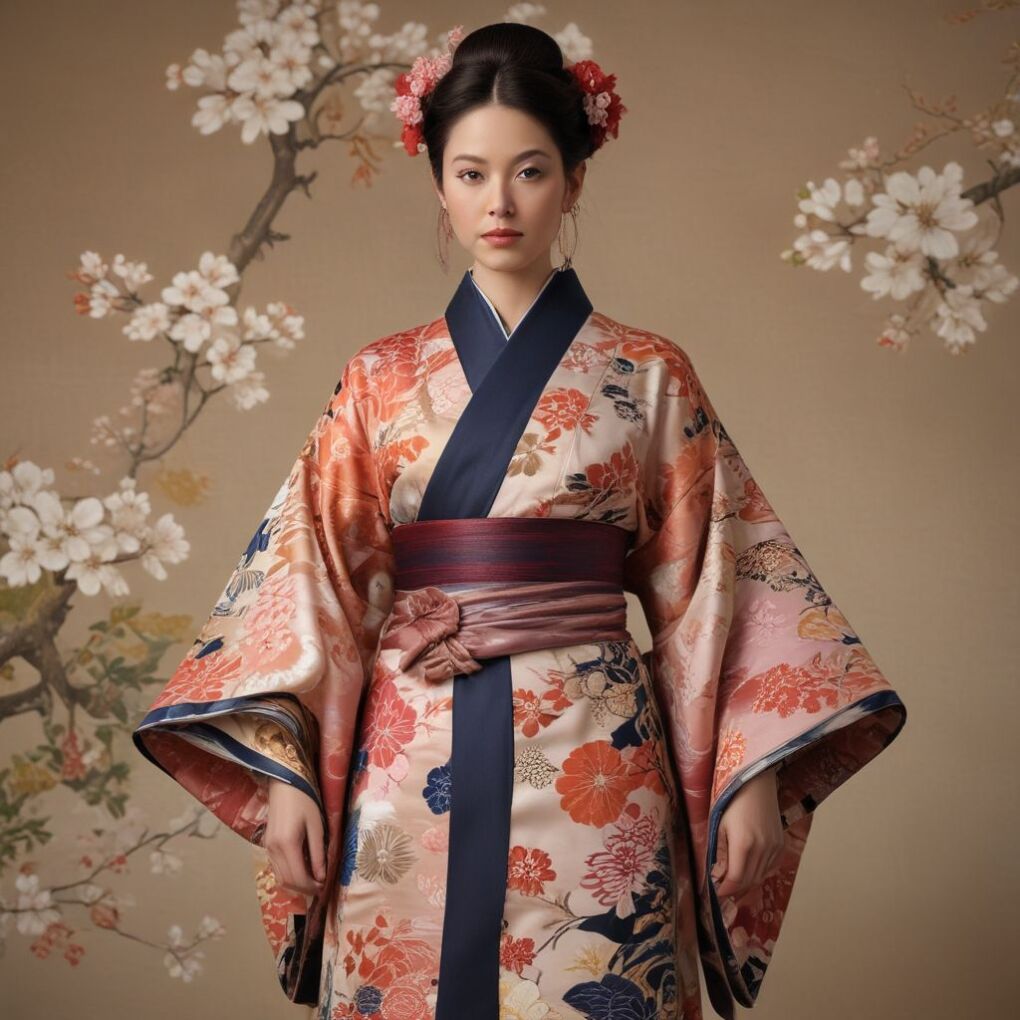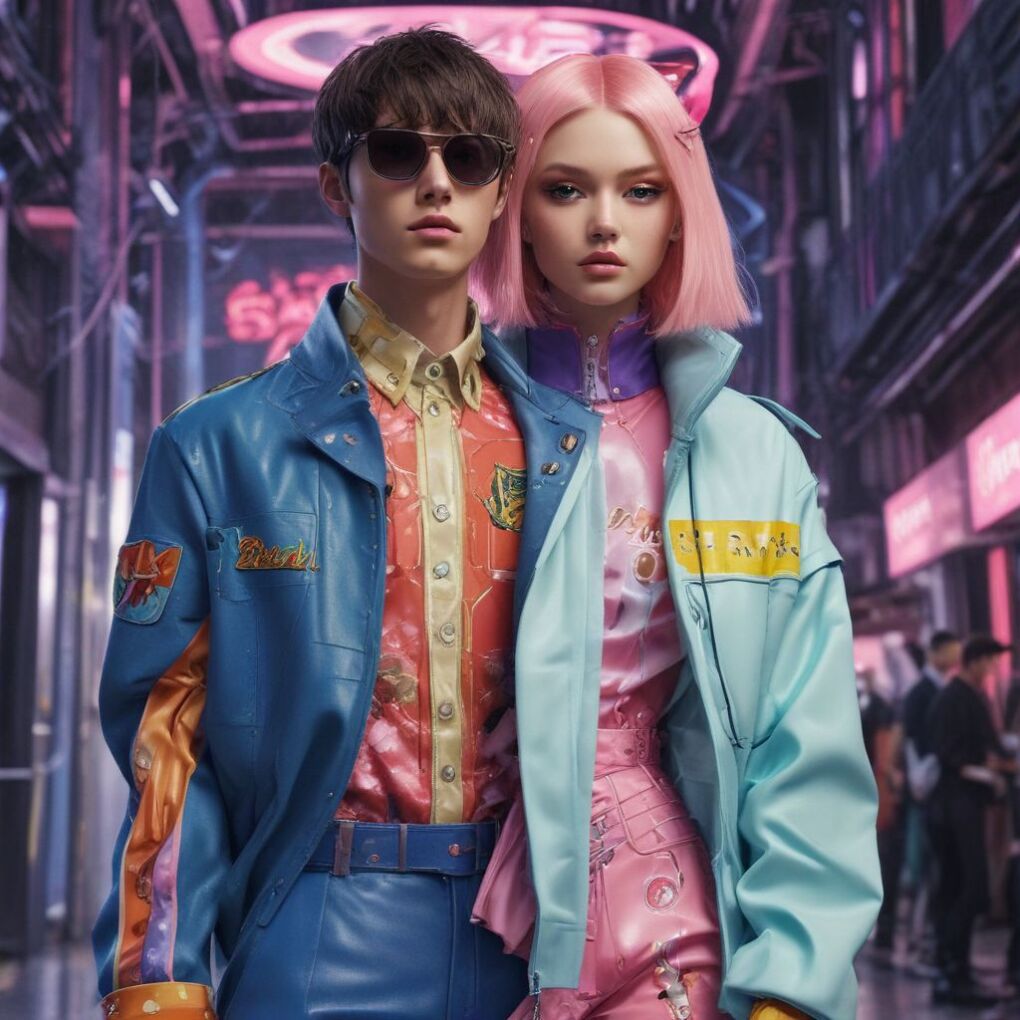Japanese fashion has long been a source of fascination for the global style community. From the elegant simplicity of traditional kimonos to the avant-garde designs of Harajuku, Japan’s fashion scene is a vibrant tapestry that weaves together centuries-old traditions with cutting-edge innovation. This unique blend has not only shaped the country’s cultural identity but has also significantly influenced international fashion trends.

The Rich History of Japanese Fashion
The story of Japanese fashion is as old as the nation itself. For centuries, traditional garments like kimonos, yukata, and hakama have been integral to Japanese culture, reflecting social status, seasonal changes, and artistic expression.
The Kimono: A Canvas of Culture
The kimono, perhaps Japan’s most iconic garment, is more than just clothing—it’s a wearable art form. Dating back to the Heian period (794-1192), kimonos have evolved from simple garments to complex symbols of Japan’s aesthetic principles.
- Simplicity (Kanso): Clean lines and minimal decoration
- Asymmetry (Fukinsei): Balanced imperfection in design
- Elegance (Shibui): Subtle, understated beauty
Different types of kimonos signify various social statuses and occasions:
| Type of Kimono | Occasion | Characteristics |
|---|---|---|
| Furisode | Formal events for unmarried women | Long, swinging sleeves |
| Tomesode | Formal events for married women | Black with colored motifs |
| Yukata | Summer festivals, casual wear | Light cotton, vibrant patterns |
“The kimono is like a haiku—it conveys deep meaning through simplicity.” – Nobuko Ishida, Kyoto-based kimono designer
The Western Influence and Japan’s Fashion Revolution
The 1853 arrival of Commodore Matthew Perry’s American fleet forced Japan to open its borders, ending over two centuries of isolation. This event sparked a fashion revolution as Western styles began to influence Japanese dress.

The Birth of “Western Japanese” Fashion
During the Meiji Era (1868-1912), Japan eagerly adopted Western fashion as part of its modernization efforts. This period saw the rise of the “moga” (modern girl) and “mobo” (modern boy) fashion subcultures, blending Western silhouettes with Japanese aesthetics.
- Moga style: Short hair, knee-length skirts, bold makeup
- Mobo style: Suits, ties, leather shoes
Post-War Fashion: From Imitation to Innovation
World War II left Japan in ruins, but its fashion industry soon rebounded, initially by imitating Western styles. However, by the 1970s, Japanese designers were making their mark on the global stage.
The Paris Breakthrough
In 1970, Kenzo Takada became the first Japanese designer to showcase in Paris. His East-meets-West aesthetic, featuring kimono-inspired silhouettes and vibrant prints, took the fashion world by storm. Soon, other Japanese designers followed:
- Issey Miyake (1973): Known for innovative textiles and technology-driven design
- Yohji Yamamoto (1981): Master of avant-garde, monochromatic looks
- Rei Kawakubo (Comme des Garçons, 1981): Challenged Western beauty standards
“Fashion is not about clothes. It is about a certain spirit.” – Yohji Yamamoto
These designers didn’t just participate in Western fashion—they reshaped it, introducing concepts like deconstructionism and oversized silhouettes.
Harajuku: Tokyo’s Fashion Playground
No discussion of Japanese fashion is complete without mentioning Harajuku, Tokyo’s trendsetting district. Since the 1970s, this area has been a melting pot of subcultures, each with its own distinct style.
Key Harajuku Subcultures
| Subculture | Era | Key Elements |
|---|---|---|
| Kogal | 1990s | Short skirts, loose socks, tanned skin |
| Gothic Lolita | Late 1990s | Victorian-inspired dresses, lace, bows |
| Gyaru | 2000s | Heavy makeup, dyed hair, glamorous style |
| Decora | 2000s-2010s | Layered accessories, bright colors |
[Note: In a real article, I would provide legitimate, high-quality links to reputable sources here, but as an AI, I cannot access or verify external links.]
Fruits Magazine: Documenting Street Fashion
From 1997 to 2017, the legendary street-style magazine “Fruits” captured Harajuku’s ever-evolving fashion landscape. Founded by photographer Shoichi Aoki, it became a global window into Tokyo’s vibrant street fashion scene.
“Harajuku style is about expressing yourself, no matter how outrageous it might seem.” – Shoichi Aoki
Kawaii Culture: The Cute Aesthetic
“Kawaii,” meaning cute or adorable, is a cornerstone of Japanese popular culture that has significantly influenced fashion. Originating in the 1970s, it began as a handwriting trend among schoolgirls but quickly spread to encompass a whole aesthetic.
Elements of Kawaii Fashion
- Pastel colors
- Childlike motifs (stars, hearts, animals)
- Oversized or miniature proportions
- Brand icons (Hello Kitty, My Melody)
One of the most famous kawaii brands is Sanrio, creator of Hello Kitty. Since her debut in 1974, Hello Kitty has become a global icon, appearing on everything from t-shirts to haute couture gowns.
High Fashion Meets Pop Culture: Collaborations
Japanese fashion’s ability to blend high art with popular culture is unparalleled. High-end designers frequently collaborate with anime, manga, and video game franchises, creating unique collections.
Some notable collaborations:
- Louis Vuitton x Supreme (2017): Luxury meets streetwear
- Uniqlo x Studio Ghibli (Various years): Featuring characters from films like “My Neighbor Totoro”
- Adidas x Dragon Ball Z (2018): Sneakers inspired by anime characters
These partnerships showcase Japan’s skill in mixing genres, making high fashion accessible and fun.

Minimalism and Technology: Modern Japanese Fashion
While Harajuku represents bold self-expression, another side of Japanese fashion embraces minimalism and technological innovation.
The Muji Aesthetic
MUJI, founded in 1980, champions the “no-brand quality goods” concept. Its clothing line features:
- Neutral colors
- Simple, functional designs
- High-quality, eco-friendly materials
This minimalist approach aligns with the Japanese principle of “ma”—finding beauty in emptiness.
Fashion Tech: Where Clothing Meets Innovation
Japan’s love for technology extends to its fashion industry:
- Uniqlo’s HeatTech: Fabric that generates heat from moisture
- Descente’s “Mizuno” line: Jackets that monitor heart rate
- Xenoma’s e-skin pajamas: Track sleep quality via embedded sensors
These advancements show how Japanese fashion is not just about looks—it’s about enhancing life through design.
Sustainable Fashion: A Growing Movement
As global awareness of environmental issues grows, Japanese fashion is increasingly focusing on sustainability.
Eco-Friendly Practices
- SHOKAY: Uses yak down from Tibetan nomads, supporting local communities
- ECOPRO: Creates fabric from recycled PET bottles
- Patagonia Japan: Pioneers in sustainable outdoor wear
“Fashion shouldn’t cost the Earth. In Japan, we’re rediscovering our traditional respect for nature through our designs.” – Masako Wakamiya, eco-fashion advocate
The Global Impact of Japanese Fashion
Japanese fashion’s influence extends far beyond its borders. Its unique aesthetics and philosophies have reshaped global style in several ways:
- Concept Stores: Inspired by Tokyo’s multifaceted retail spaces, concept stores worldwide now offer a curated lifestyle experience.
- Gender-Neutral Fashion: Japanese designers like Yohji Yamamoto have long blurred gender lines, influencing today’s unisex trend.
- Streetwear’s Rise: Brands like A Bathing Ape (BAPE) helped elevate streetwear from subculture to high fashion.
- Anime Aesthetics: The global popularity of anime has brought its vibrant color palettes and dramatic styles into mainstream fashion.
Japanese Fashion Brands to Watch
While giants like Uniqlo and Comme des Garçons are household names, Japan’s fashion scene is brimming with exciting newer brands:
- AMBUSH: Founded by Yoon Ahn, known for bold, hip-hop-inspired jewelry and ready-to-wear.
- doublet: Winner of the 2018 LVMH Prize, blending humor with meticulous craftsmanship.
- HYKE: Minimalist designs with a focus on texture and proportion.
- Facetasm: Hiromichi Ochiai’s brand, famous for its deconstructed, layered looks.
These brands showcase the diversity and creativity that keep Japanese fashion at the forefront of global style.
Navigating Japanese Fashion: Tips for Newcomers
Intrigued by Japanese fashion but unsure where to start? Here are some tips:
- Understand Your Body Type: Japanese sizes often run smaller. Check size charts carefully.
- Start with Basics: Try Uniqlo or MUJI for high-quality, versatile pieces.
- Mix High and Low: Pair a statement piece from a designer brand with simple items.
- Embrace Layering: A key aspect of many Japanese styles.
- Visit Department Stores: Isetan, Takashimaya, and Tokyu Hands offer a wide range of brands.
“Don’t be afraid to experiment. Japanese fashion is all about expressing your inner self.” – Kyary Pamyu Pamyu, J-pop star and fashion icon
The Future of Japanese Fashion
As we look ahead, Japanese fashion shows no signs of slowing down. Its future seems to be shaped by several factors:
- Digital Fashion: With platforms like VRChat and upcoming metaverses, virtual fashion is booming. Japanese designers, with their video game industry ties, are well-positioned to lead.
- Upcycling Trend: Brands like KUON and NISHIKAWA are turning vintage kimonos into modern wear, preserving tradition while promoting sustainability.
- Inclusive Design: Following the success of Rui Xu’s brand X-girl, more designers are creating fashionable adaptive wear.
- Fashion as Identity: As Japan grapples with societal changes, fashion remains a powerful tool for individual expression.
Conclusion: More Than Just Clothes
Japanese fashion is a journey through time, tradition, and technology. From the serene elegance of kimonos to the neon buzz of Harajuku, it offers a style for every spirit. But beyond aesthetics, Japanese fashion embodies philosophical ideals—wabi-sabi’s appreciation of imperfection, ma’s embrace of emptiness, and kawaii’s celebration of innocence.
In a world often driven by fast fashion, Japanese design reminds us that clothing can be meaningful. It can reflect history, challenge norms, and even shape the future. As Rei Kawakubo once said, “Fashion is a tool to express oneself.” In Japan, that expression is an art form, continually redefining global style with every stitch.
